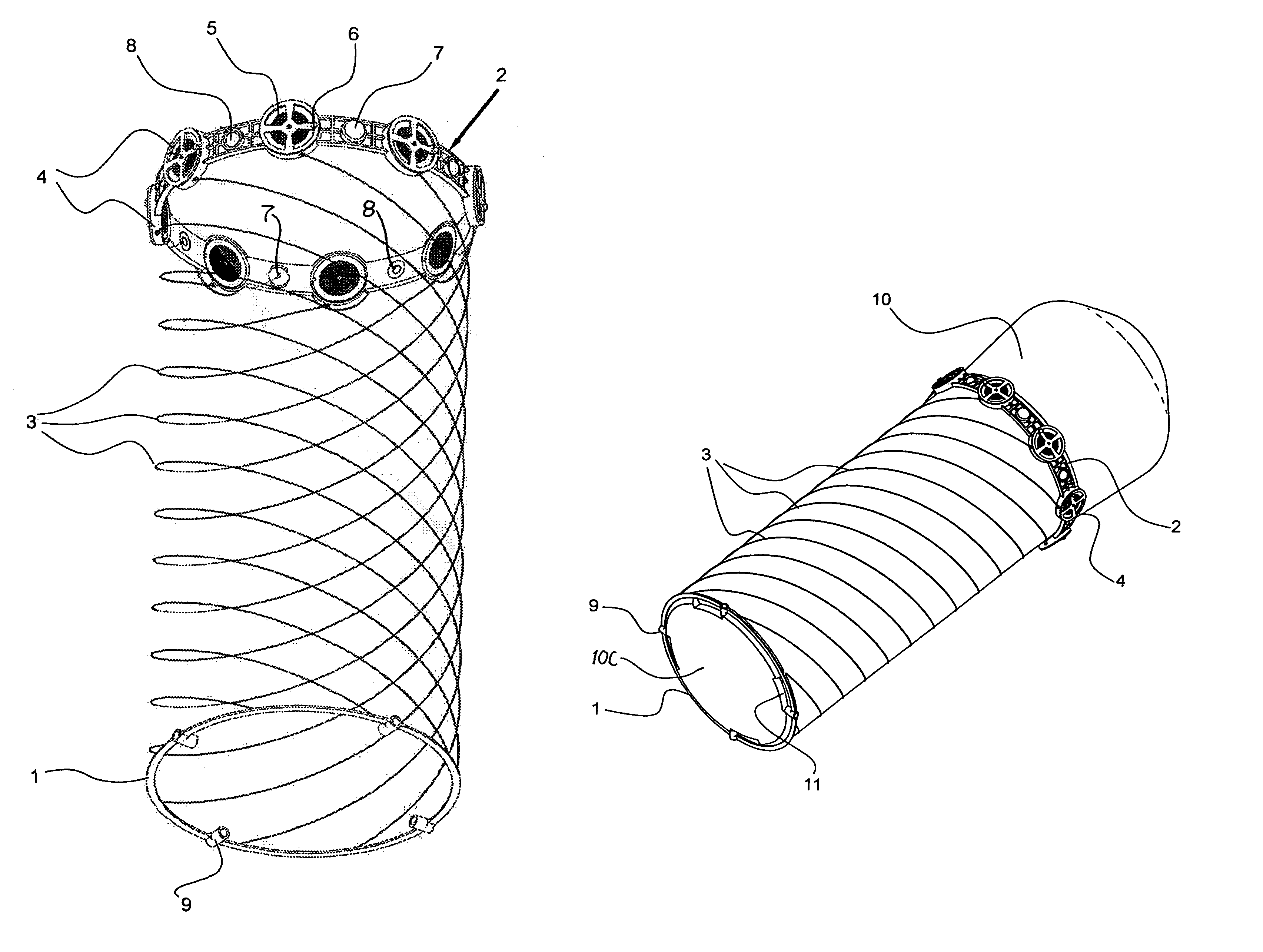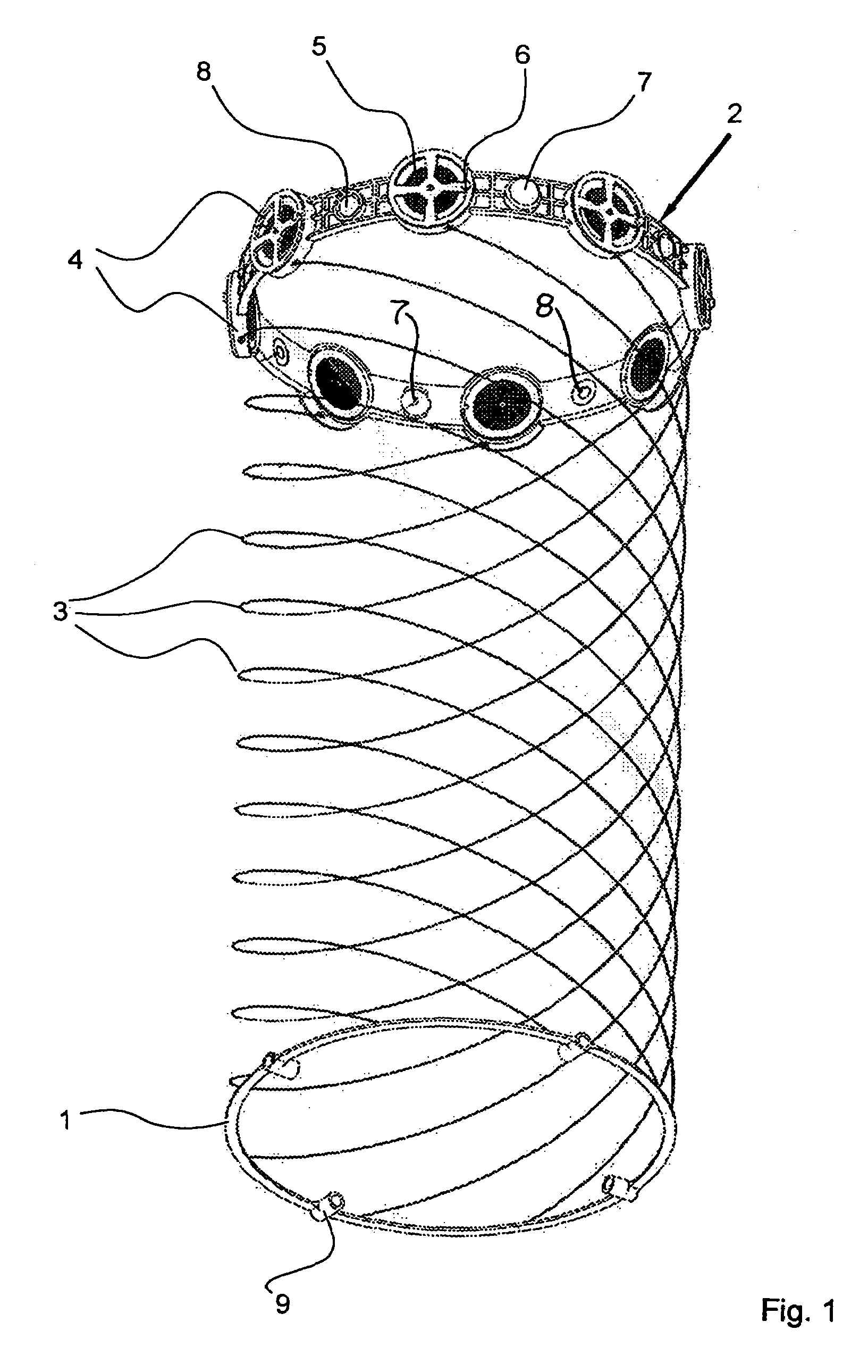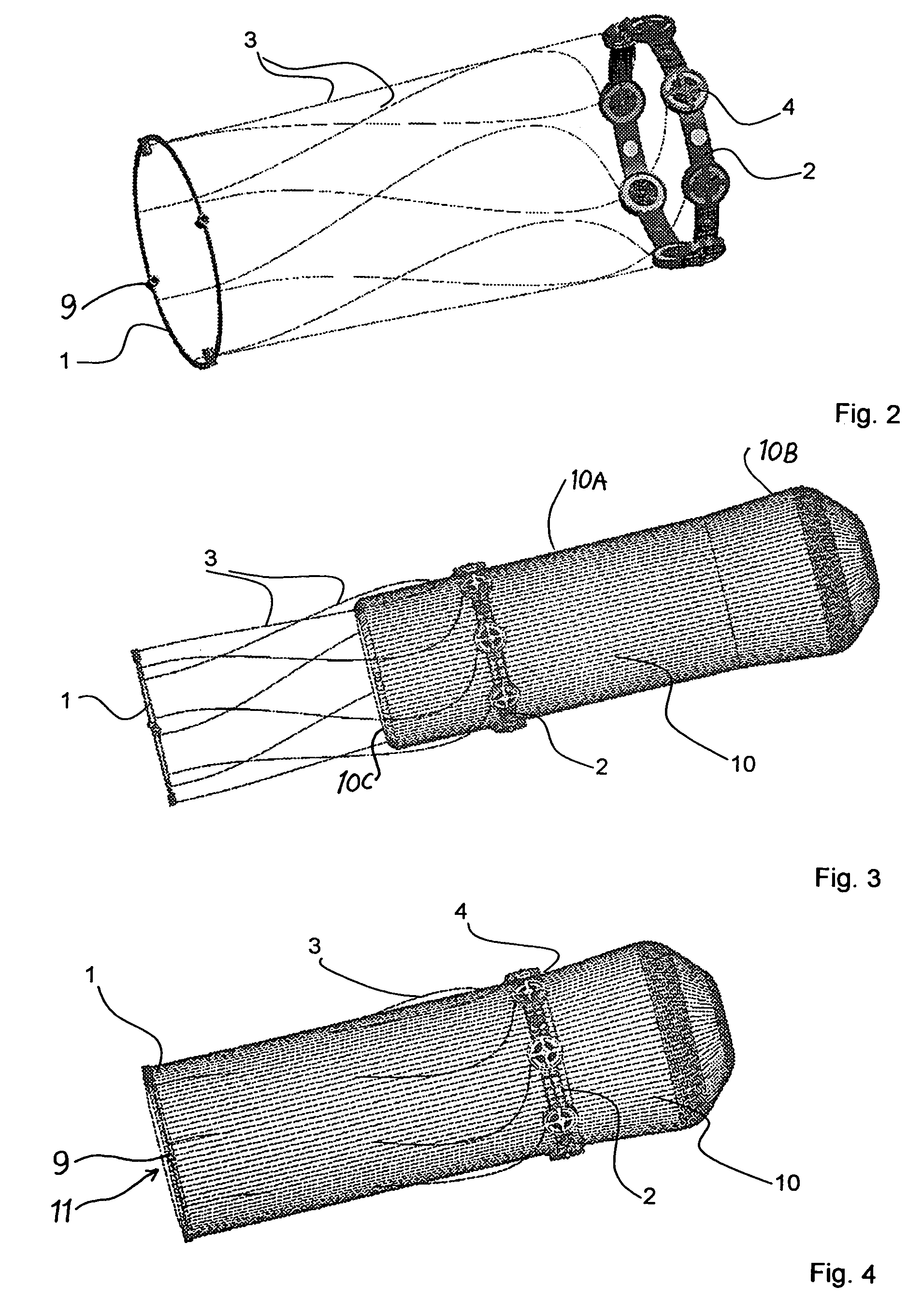Apparatus with helical tension cables for ejecting a spin-stabilized body from a spacecraft
a technology of helical tension cables and ejection systems, which is applied in the direction of cosmonautic components, cosmonautic parts, cosmonautic vehicles, etc., can solve the problems of compromising the operational reliability of the system, a relatively high weight, and a complex construction, so as to minimize the total mass and volume of the overall space flight system, reduce the risk of ejection, and eliminate the effect of considerable safety risks
- Summary
- Abstract
- Description
- Claims
- Application Information
AI Technical Summary
Benefits of technology
Problems solved by technology
Method used
Image
Examples
Embodiment Construction
[0023]FIG. 1 shows an ejection apparatus according to an example embodiment of the invention. The ejection apparatus essentially comprises a first ring element 1, a second ring element 2, and a plurality of tension cables 3 extending between and interconnecting the two ring elements 1 and 2. In the present embodiment, the apparatus includes a total of eight such tension cables 3. The tension cables may be structurally embodied as any type of cable, rope, wire, fiber, or the like, of synthetic fiber materials or of metal or of other suitable materials, but are preferably embodied as metal wire cables, e.g. steel wire cables. The ring elements 1 and 2 may be constructed of metal, fiber reinforced composite material, or other suitable materials.
[0024]The apparatus further comprises cable winding devices 4 such as cable winding spools, drums, winches, or the like. Each cable winding device 4 is equipped with an internally arranged torsion spring 5 such as a coil spring or spiral spring,...
PUM
 Login to View More
Login to View More Abstract
Description
Claims
Application Information
 Login to View More
Login to View More - R&D
- Intellectual Property
- Life Sciences
- Materials
- Tech Scout
- Unparalleled Data Quality
- Higher Quality Content
- 60% Fewer Hallucinations
Browse by: Latest US Patents, China's latest patents, Technical Efficacy Thesaurus, Application Domain, Technology Topic, Popular Technical Reports.
© 2025 PatSnap. All rights reserved.Legal|Privacy policy|Modern Slavery Act Transparency Statement|Sitemap|About US| Contact US: help@patsnap.com



